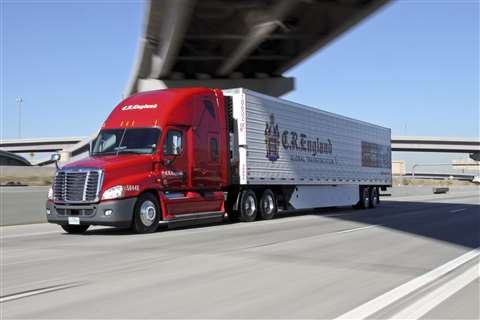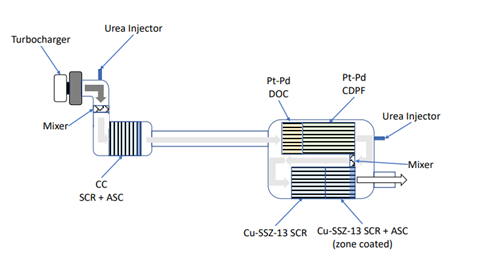EPA finalizes tough truck emissions standards
20 December 2022
The U.S. Environmental Protection Agency (EPA) has finalized the strongest-ever national clean air standards to cut emissions from heavy-duty trucks, beginning with model year 2027. The new standards, which is the first update to clean air standards for heavy duty trucks in more than 20 years, are more than 80% stronger than current standards, the agency said.
 The U.S. EPA has finalized new emissions rules for heavy-duty trucks. (Photo: Freightliner)
The U.S. EPA has finalized new emissions rules for heavy-duty trucks. (Photo: Freightliner)
This final rulemaking is the latest step toward implementing the agency’s Clean Truck Plan, which is intended to move America’s heavy-duty trucking fleet towards low-carbon and electric technologies.
“EPA is taking significant action to protect public health, especially the health of 72 million people living near truck freight routes in America, including our most vulnerable populations in historically overburdened communities,” said EPA Administrator Michael S. Regan. “But we’re not stopping there.
“This is just the first action under EPA’s Clean Trucks Plan to pave the way toward a zero-emission future. These rigorous standards, coupled with historic investments from the Inflation Reduction Act and the bipartisan Infrastructure Law, will accelerate President Biden’s ambitious agenda to overhaul the nation’s trucking fleet, deliver cleaner air, and protect people and the planet.”
 Several technologies can be used to reduce emisssions in heavy-duty engines, EPA said, include close-coupled catalysts. (Photo: EPA)
Several technologies can be used to reduce emisssions in heavy-duty engines, EPA said, include close-coupled catalysts. (Photo: EPA)
Relative to current rules, the new standards are more than 80% stronger, increase useful life of governed vehicles by 1.5 to 2.5 times and will require emissions warranties that are 2.8 to 4.5 times longer than current warranty periods.
The rule also requires manufacturers to better ensure that vehicle engines and emission control systems work properly on the road and must limit tamper-prone access to electronic pollution controls.
EPA cited several technologies that may be used by manufacturers to help diesel engines meet the ambitious emissions targets, particularly at low-load and low-temperature conditions. These include active thermal management through use of variable valve actuation and cylinder deactivation systems and advanced SCR systems incorporating additional close-coupled catalysts.
EPA said the announcement is the first of three major actions being taken the agency’s EPA’s Clean Trucks Plan. In the coming months, EPA intends to release the proposals for the remaining two steps in the Clean Trucks Plan, including the proposed Phase 3 greenhouse gas (GHG) standards for heavy-duty vehicles beginning in Model Year 2027, as well as the proposed multipollutant standards for light- and medium-duty vehicles beginning in Model Year 2027.
EPA said it will also now complete the assessment of the technical and legal record before the agency and prioritize issuing decisions on three pending heavy-duty program waiver requests from the state of California in early 2023.
For more information on the new regulations, click here.
STAY CONNECTED




Receive the information you need when you need it through our world-leading magazines, newsletters and daily briefings.
POWER SOURCING GUIDE
The trusted reference and buyer’s guide for 83 years
The original “desktop search engine,” guiding nearly 10,000 users in more than 90 countries it is the primary reference for specifications and details on all the components that go into engine systems.
Visit Now
CONNECT WITH THE TEAM









